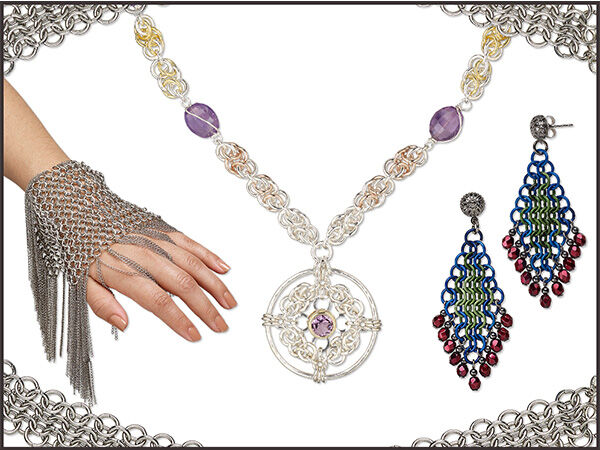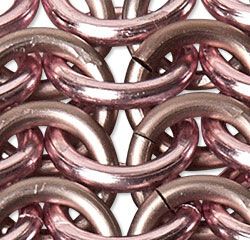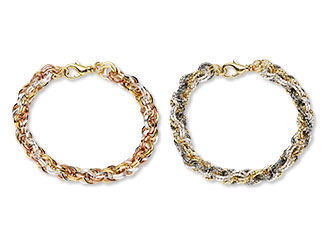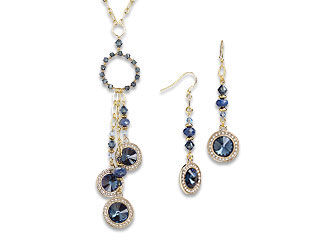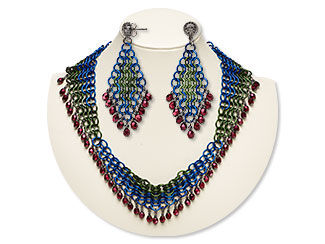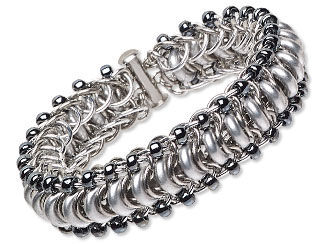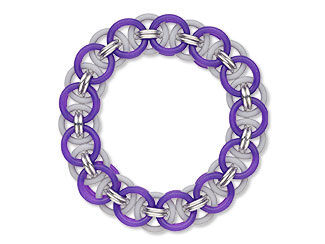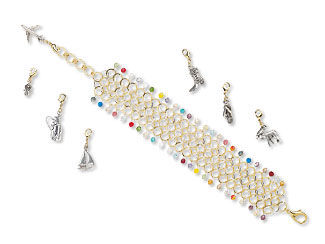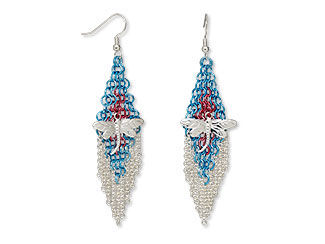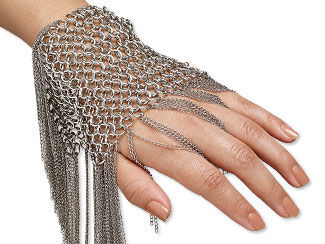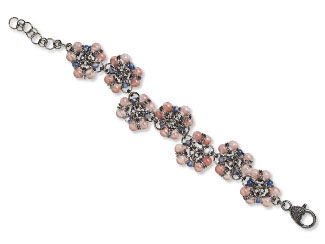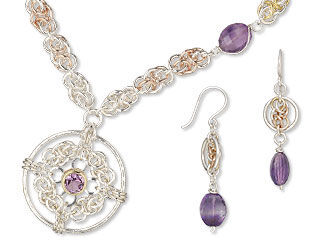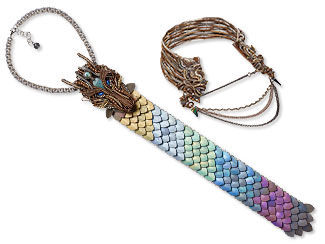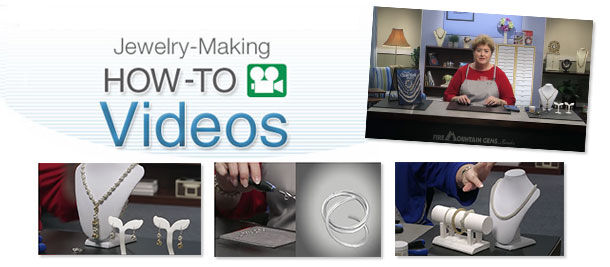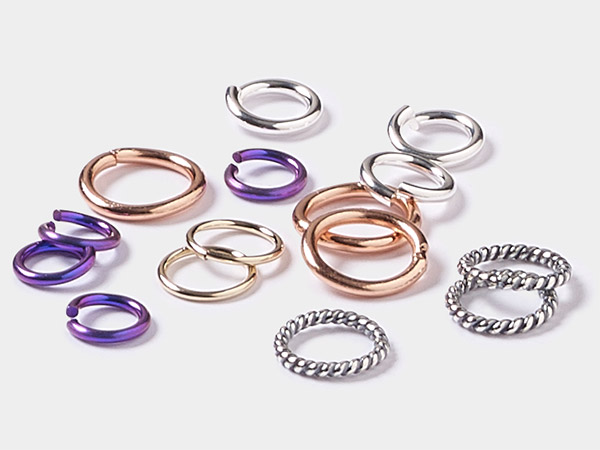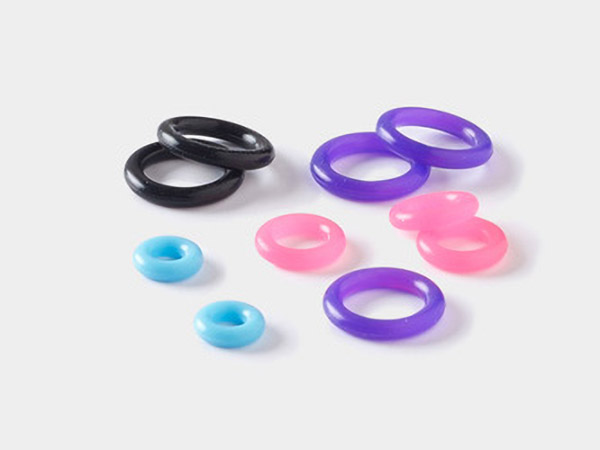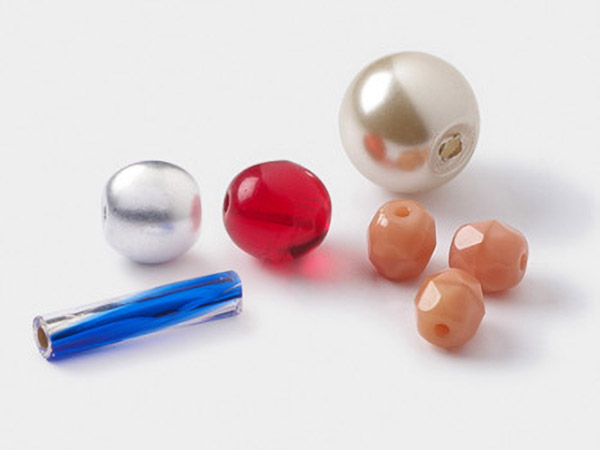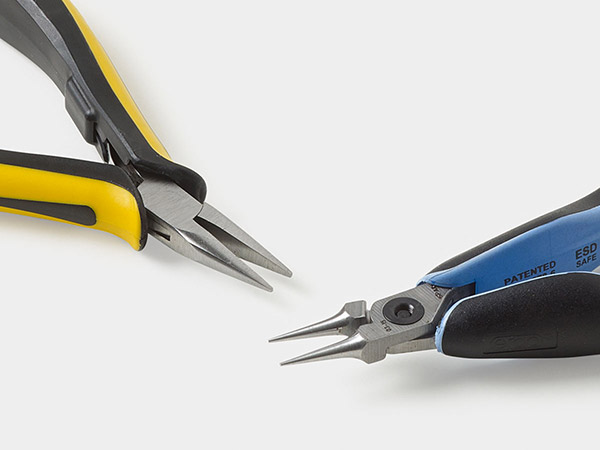Chainmaille: Fashionable Armor
Chainmaille: Then and Now
Many centuries ago, medieval blacksmiths discovered that thousands of tiny metal rings meshed together made stab-resistant, ultra-light armor. This battlefield innovation, called chainmaille, protected knights from swords, daggers and arrows. But in modern times, demand for medieval armor has shriveled while the need for exclusive jewelry has exploded. The same mesh construction that shielded the vitals of ancient warriors is now in vogue for necklaces, bracelets and rings. And the good news: many are relatively simple to make.
Chainmaille offers endless possibilities for the clever designer, with the artist's creativity as the only boundary. Chainmaille is distinctive because the handcrafted process of creating chainmaille does not lend itself to mass production; each piece takes many hours to create and is one of a kind. With time and patience, an imaginative artist can accrue a large collection of unique designs.
The European version of chainmaille armor is known for its basic 4-in-1 pattern where every link in the pattern goes through 4 other links. This is a common style for jewelry today and has been around over a thousand years. The Japanese also created their own version of chainmaille, Kusari gusoku. Samurai warriors wore Kusari nearly a thousand years ago and continued to wear it until the 19th century.
Making Chainmaille
A jewelry designer can create chainmaille with a few basic items: jump rings, jewelry pliers, an instructional pattern and any desired embellishments. When working with jump rings, it's important to use the proper technique for ''Opening a Jump Ring'' to avoid damaging them. To open a jump ring, place a pair of chain-nose pliers and flat-nose pliers on each side of the opening. Open the jump ring by rotating the pliers in opposite directions. Do not pull outwards as you will ruin the curve of the jump ring. To close the jump ring, rotate the two sides back into place. For more detailed instructions on specific chainmaille projects, take a look at our Jewelry-Making Instructions page.
Step-by-Step Instructions
The Fire Mountain Gems and Beads Jewelry-Making Instructions page has hundreds of designs with step-by-step instructions on how to create them. Among the plethora of projects are a few chainmaille designs to explore. You'll find simple chains to get your creative feet wet and start you on your chainmaille journey, more intricate designs for a challenge and other inspiring techniques.
Jewelry Inspirations
Chainmaille in and of itself is incredible and eye-catching, and those new to the technique may be perfectly happy sticking to basics. For the more adventurous artists, there are many inspiring ways to take your chainmaille game to the next level.
Explore the different looks you can get by swapping out plain jump rings with textured rings and different metallic finishes for colored rings, such as anodized aluminum.
Add pops of color to your weave with glass rings. Use Oh! Ring™ silicone components in place of closed jump rings for fun color, a different texture and a bit of stretch.
Incorporating glass and crystal beads and components gives your chainmaille designs spectacular sparkle.
Embellish chainmaille with other jewelry-making components such as charms, filigrees or rhinestone and cabochon settings. Anything with a loop or two (or ten or twelve) or open spaces along the edge is fair game.
To play up the "chain" aspect, create earrings, bracelets or necklaces made of chainmaille and hang lengths of chain from them for truly fabulous fringe jewelry!
There are multiple ways to incorporate gemstone beads into your designs. Whether you want to keep it simple with links between chainmaille segments or make them part of the weave, gemstone beads add a wonderful new element.
Want to channel your inner mother (or father) of dragons or add a fun "mermaid" vibe? Attach colorful aluminum scales and washers into your chainmaille weave. This technique creates an overlapping pattern resembling scales or feathers, thus earning it the name of scalemaille.
Learn how to create a Persian Chainmaille Weave, Byzantine Chainmaille Weave or a Chainmaille Love Knot from Sue Ripsch, renowned chainmaille jewelry artist, instructor and author of ''Classic Chain Mail Jewelry." Sue gives detailed instructions on how to quickly create these and other one-of-a-kind jewelry projects.
Why settle for mass-produced jewelry? Discover the magic of chainmaille and create something truly special.
Shop for Your Materials Here:
Have a question regarding this project? Email Customer Service.
Copyright Permissions
All works of authorship (articles, videos, tutorials and other creative works) are from the Fire Mountain Gems and Beads® Collection, and permission to copy is granted for non-commercial educational purposes only. All other reproduction requires written permission. For more information, please email copyrightpermission@firemtn.com.
